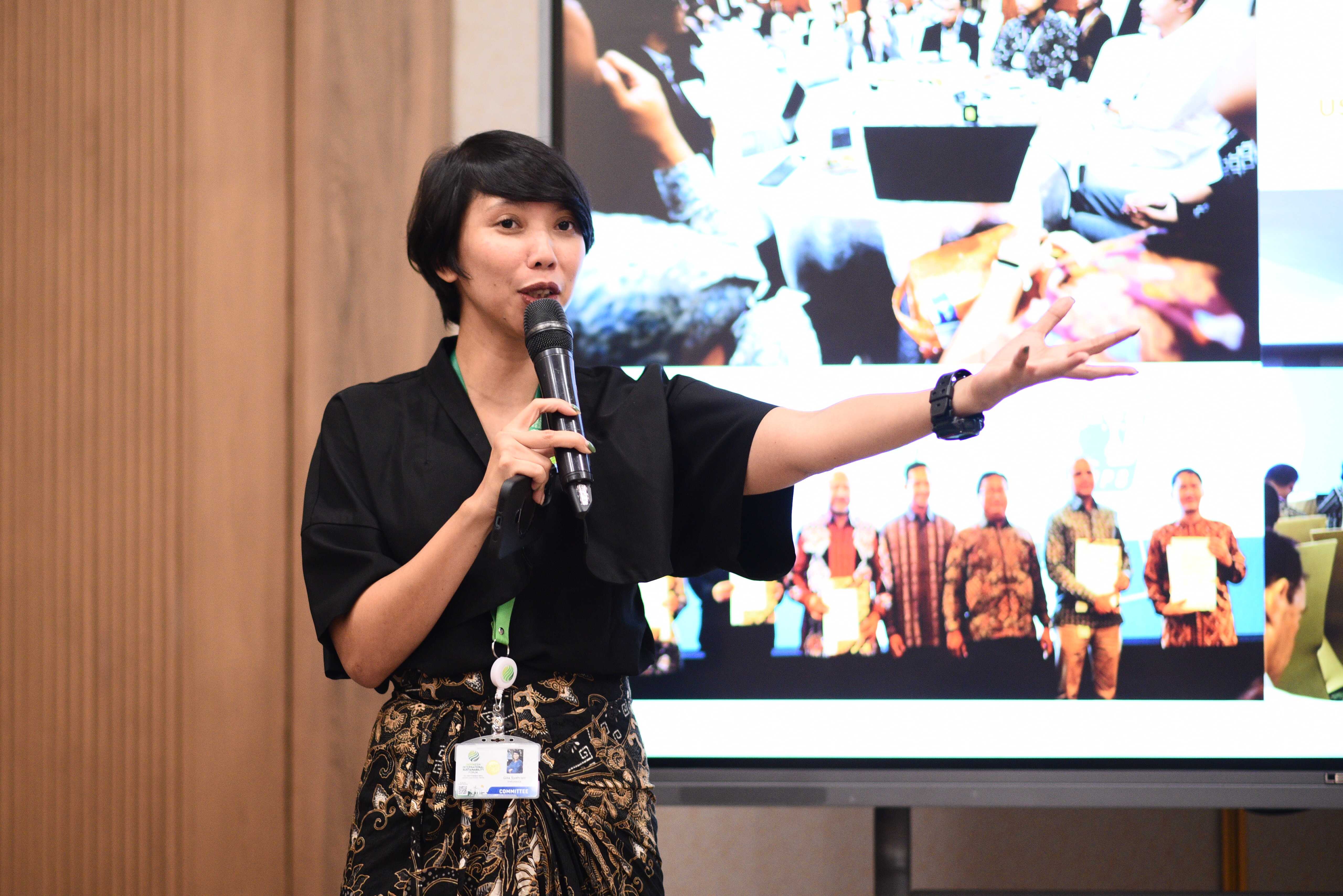Mainstreaming the Narrative: Strengthening Value Chains for Regenerative Forest Business in Indonesia
In the quest to achieve economic, social, and environmental sustainability, Indonesia's bioeconomy holds untapped potential that could significantly contribute to the country’s long-term goals. Regenerative forestry business, which prioritizes the health of the ecosystem, biodiversity, and climate resilience, offers a promising solution. This approach could lead to diversification and development of agroforestry practices that benefit both the environment and local communities. The roundtable event, “Mainstreaming the Narrative: Strengthening Value Chain for Regenerative Forest Business,” held on September 5, 2024, as part of the Indonesia International Sustainability Forum 2024, sought to elevate this narrative, gathering stakeholders from various sectors to discuss how to strengthen the value chain in this crucial industry.
Indonesia's Forest Potential: Opportunities and Challenges
Indonesia is home to approximately 60 million hectares of production forests, yet much of this potential remains underutilized. According to Indonesia’s Ministry of Environment and Forestry, sustainable forest management could unlock billions in economic value, create jobs, and provide environmental benefits like carbon sequestration and climate resilience.
However, as the roundtable discussed, the primary challenge lies in scaling these regenerative forestry models. While successful examples exist, they often remain small-scale, fragmented across different regions of Indonesia. To truly leverage the potential of regenerative forest business, scaling up efforts through value chain strengthening, market access, and investment is necessary.
Scaling Up: Downstreaming, Market Access, and Collaboration
One key message from the event was the need for downstreaming Indonesia’s forest products. As highlighted by Silverius Oscar Unggul from Kadin's Environment and Forestry sector, "Huluisasi" — a term representing the downstreaming of products — is crucial to add value to raw forest products. Instead of exporting raw materials, Indonesia should focus on processed goods with higher value. He likened the regenerative forest business to the development of the crude palm oil (CPO) industry, suggesting that certain commodities could become Indonesia's next CPO, offering vast market potential, particularly with global companies aiming for net zero and reducing Scope 3 emissions.
However, market access remains a critical issue for suppliers, as highlighted by Widharmika Agung from Systemiq. Many forest businesses, especially smallholders, face difficulties finding buyers. Buyers, on the other hand, often face reliability issues. The gap between these two market actors needs to be closed, and there is a growing interest from corporations such as LDC and Sidomuncul, which have integrated sustainability practices into their business models. As Diva Tanzil from LDC mentioned, their "Stronger Coffee Initiative" aligns with regenerative agriculture and bioeconomy, focusing on livelihoods, reducing carbon emissions, and improving farming practices. Similarly, Sidomuncul, a herbal company, depends heavily on nature for its raw materials, making climate resilience a critical component of its supply chain strategy.
The Role of Bioeconomy in Indonesia’s Development Strategy
Regenerative forestry is also becoming a significant pillar in Indonesia’s national development strategy. As noted by Gita Syahrani of Koalisi Ekonomi Membumi (KEM), the Indonesian government has acknowledged green economy as a strategy to escape the middle-income trap, and bioeconomy is now included in the country’s mid-term development plan. Yet, the focus has predominantly been on energy sectors like coal and minerals, while only 10% of the downstreaming strategy covers land use, agriculture, and oceans.
The conversation focused on several potential narratives for positioning Indonesia's bioeconomy strategy:
1. Empowering smallholders and tapping into local wisdom as part of the nation's identity.
2. Creating new types of entrepreneurs and responsible consumers.
3. Utilizing bioeconomy as a pathway to access new funds and create jobs, thereby fostering economic inclusion.
Addressing Challenges: Risk, Scale, and Momentum
For the forestry business to truly thrive, risk-sharing across the value chain is essential, as expressed by Purwadi of APHI. While the potential is significant, much of Indonesia’s forested land is outside Java, where logistical and economic challenges persist. To mitigate these risks, the responsibility for sustainability and resilience should not solely rest on the suppliers, but also be shared with buyers and financiers.
Several strategies were proposed to scale up regenerative forestry:
- Technology and innovation can help improve the supply chain, from traceability to AI-powered risk assessments, according to Rama Manusama, a venture capital representative.
- There is an opportunity to explore bioeconomy models from Brazil, particularly in the Amazon, where bioeconomy has been clearly defined and embraced for ecosystem and social values, as highlighted by the Ford Foundation.
- Financing solutions are available, as stated by Romy Cahyadi from Indonesia Impact Alliance. He emphasized that while funding exists, it is important to ensure that it reaches micro businesses, which are often excluded from traditional financing mechanisms.
The Power of Narrative and Communication
Finally, the roundtable highlighted the importance of narrative and communications in mainstreaming regenerative forestry. Pandemictalks’ communications advisor, Firdza Radiany, noted that communicators have the power to create momentum and help shape this emerging identity of regenerative forestry. By crafting compelling stories around how sustainable products benefit both farmers and consumers, businesses can foster a sense of pride and ownership around bioeconomy.
In conclusion, the roundtable underscored that while challenges remain, Indonesia is well-positioned to lead in the regenerative forestry space. With continued collaboration across sectors, investment in technology and innovation, and a strong communications strategy, the narrative of regenerative forestry as part of Indonesia's bioeconomy can be mainstreamed. The next step is to scale up these efforts, creating a thriving, resilient forest economy that benefits the environment, businesses, and communities alike.





